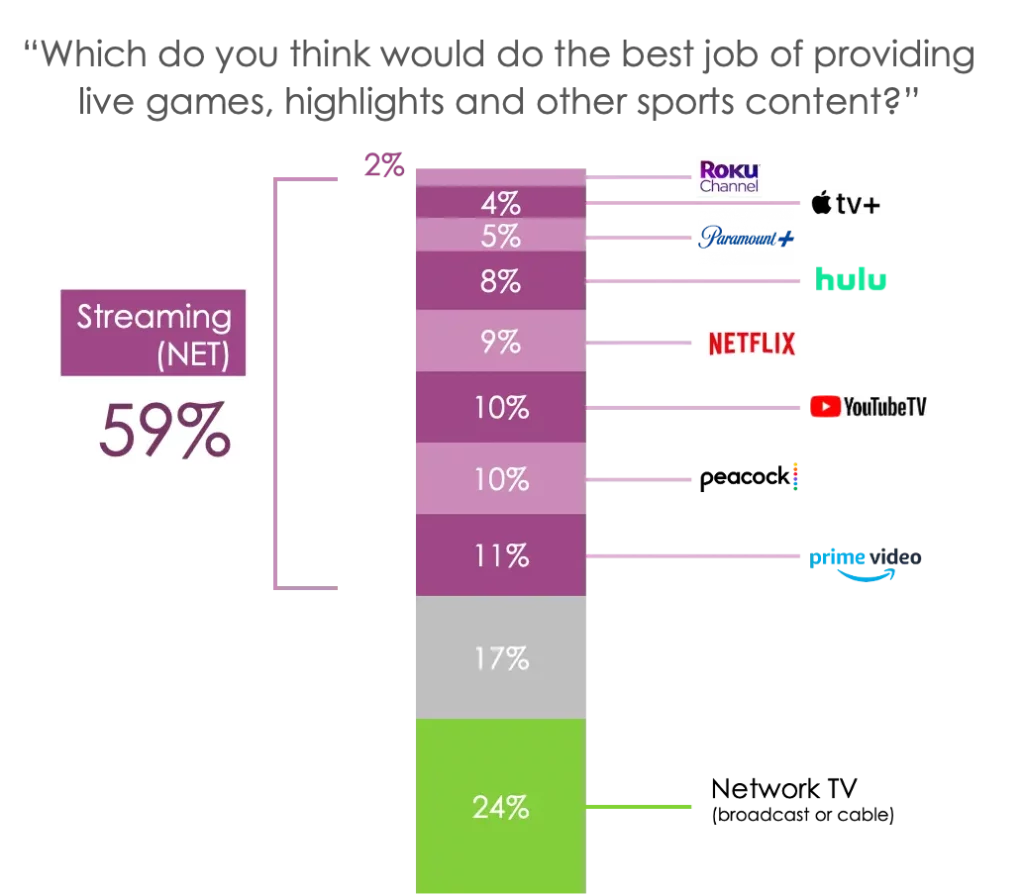ESPN’s latest feature, Where to Watch, is a much-needed relief to the chaos that sports streaming has become. Launched on ESPN’s app and website, this new service is a universal guide for finding live sports games across the fragmented landscape of streaming services. While the idea may seem straightforward, it’s a strategic move that reflects ESPN’s broader ambitions in the evolving digital sports ecosystem.
A Long-Awaited Response
Honestly, this should have happened sooner. ESPN was once my go-to source for everything sports—the app that served as my front page to the sports world. But over time, they lost me. At one point, the ESPN app wouldn’t even mention an outside network carrying a game. You were out of luck if a game wasn’t on ABC, ESPN, or ESPN+. They would prominently display their owned and operated networks, but if the game was on a different platform, they wouldn’t help you at all. At the time, Disney’s networks accounted for only about 30% of all games, so by prioritizing competition over providing comprehensive value, ESPN essentially forced me—and likely many others—to turn to Google just to figure out where to watch.
Impressive @espn. Only a couple of years ago, you wouldn't mention any other networks in your game listings.https://t.co/KHBEukc8lx
— Kirby Grines (@kirbygrines) March 3, 2023
For me, ESPN was like my front page to the sports world… and not anymore. Now, they’re finally realizing the mistake. Where to Watch is another way to get you into ESPN’s universe. The company has a lot of sports rights and displays those all over the new guide, but it’s also looking for ways to get more people on its website and app, where they might also decide to play fantasy sports or gamble through ESPN Bet. ESPN wants—and needs—to become habitual beyond just the content it has. Yes, content is king. I get it. But media companies need to think beyond that and figure out how to become lifestyle brands—offering products so integrated into daily routines that users wouldn’t even think about canceling.
This is ultimately what every traditional media company needs to figure out. ESPN is finally making strides in this direction. Perhaps I’ll try out this update, especially now that the college football season is here (Go Blue!). While I wished this would have happened years ago, the timing couldn’t be more critical.
The sports streaming landscape has become so fragmented that it’s almost absurd. Take a New York Yankees fan in the New York area, for example. To catch a game, they might need to switch between linear TV on the YES Network, ESPN, or Warner Bros. Discovery’s TBS—or navigate a maze of streaming services like Amazon Prime Video, Apple TV+, and NBCUniversal’s Peacock. It’s a chaotic mess that’s crying out for a solution. Just as I was writing this article, the Gotham Sports app was announced, aiming to simplify things by combining MSG Networks and YES Network into a single platform. ESPN’s ‘Where to Watch’ has the potential to bring such simplification to the sports streaming landscape, offering hope to sports fans.
Streaming was supposed to be about convenience—watching what you want, when you want. And while that promise has been realized, it’s now wrapped in layers of complexity.
ESPN’s Strategic Shift
ESPN’s willingness to link to competitors like Amazon Prime, Apple TV+, and various regional sports networks marks a significant shift in strategy. By doing this, ESPN can, in fact, become the dominant, de facto hub for sports, positioning itself as the front page for every game. This move suggests that ESPN is less focused on merely competing in the sports streaming market and more interested in becoming an indispensable part of every sports fan’s digital routine—a search engine akin to Google, but for sports. This strategy mirrors what Plex is doing with movies and TV series through its Universal Watchlist feature. ESPN could become the go-to place where fans start their journey, no matter where the game is broadcast.
The Fragmentation Dilemma
The timing of ESPN’s move couldn’t be more critical. As a recent Hub Entertainment Research study highlights, fans are increasingly turning to streaming services for sports content, yet they’re also facing a slew of technical and logistical challenges. About 37% of avid sports fans report experiencing regular issues like buffering, app crashes, and lag between streaming feeds and live broadcasts. These problems are compounded by the growing complexity of finding which platform is streaming a particular game. For example, a New York Yankees fan might need subscriptions to several different services just to follow their team throughout the season.

Where to Watch aims to tackle these issues head-on. By aggregating information and guiding users to the correct platform, ESPN hopes to reestablish itself as the central hub for sports fans. However, the challenge remains steep. While 59% of fans prefer streaming services over traditional networks for watching sports, they still trust network TV more to deliver a reliable viewing experience. ESPN’s new feature will need to guide users and assure them that the quality of their experience won’t suffer in the streaming environment.
The Road Ahead
The introduction of Where to Watch is a significant step for ESPN, but the real story lies in how this move could position the network to become an indispensable part of our daily lives. For years, I’ve talked about the need for media companies to go beyond just content and integrate themselves into our routines. By linking to competing streaming services, ESPN is making a strategic play to be the app you open first whenever you want to watch sports. This isn’t just about being a guide—it’s about becoming a habit, something that’s sorely needed in today’s fragmented media landscape.
What’s particularly interesting is that ESPN might stand to gain financially from this integration. There have been discussions about ESPN taking a cut of subscription revenue when users sign up for a service through its platform. I’m very curious to know what those deals look like. It’s a smart move that could make ESPN a guide and a gateway to sports content, much like how Plex aims to be the go-to platform for movies and TV series with its Universal Watchlist feature.
This strategy taps into something I’ve been advocating for: media companies need to think beyond content. Yes, content is king—I get it. However, relying solely on shows and sports rights to keep viewers engaged is increasingly unrealistic. Recent data from Antenna reveals a 300% increase in subscription cancellations across streaming services, driven by “show chasers” who jump from one platform to another, following their favorite series. It’s a clear sign that content alone won’t keep subscribers loyal in 2024.
Media companies must become habitual, much like how apps like Temu and SHEIN have made shopping an engaging daily routine, even when you don’t need anything. I’m ambivalent about the term ‘gamification,’ but it’s relevant here. Gamification isn’t just about points and badges; it’s about creating an interactive ecosystem that rewards users for loyalty. Imagine ESPN not just showing you where to watch a game but rewarding you for watching it, participating in polls, or attending virtual watch parties. This is where the future lies—transforming casual viewers into dedicated fans by offering more than just content but an entire experience.
Moreover, the importance of community can’t be overlooked. Features like shared watch lists, viewer leaderboards, and real-time reaction feeds could turn ESPN into more than just a sports guide—it could become a social hub for sports fans, fostering a sense of belonging that keeps people coming back, game after game.Ultimately, the success of Where to Watch will depend on ESPN’s ability to innovate beyond being just a guide. As every service now offers content, even exclusive content, that alone isn’t enough. The key is to create a platform that provides interaction, engagement, and reasons to stick around long after the final whistle. ESPN has the potential to become the Google of sports—a starting point for every fan, every game, every time.







